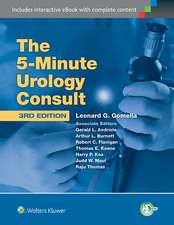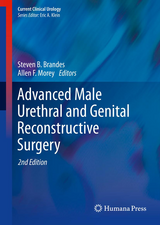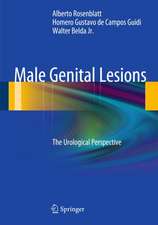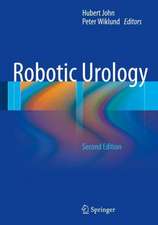The Management of Lithiasis: The Rational Deployment of Technology: Developments in Nephrology, cartea 38
Editat de Jamsheer J. Talati, R. a. L. Sutton, F. Moazam, M. Ahmeden Limba Engleză Paperback – 26 oct 2012
Din seria Developments in Nephrology
- 5%
 Preț: 1611.20 lei
Preț: 1611.20 lei - 5%
 Preț: 1417.91 lei
Preț: 1417.91 lei - 5%
 Preț: 719.02 lei
Preț: 719.02 lei - 5%
 Preț: 1418.83 lei
Preț: 1418.83 lei - 5%
 Preț: 1418.48 lei
Preț: 1418.48 lei - 5%
 Preț: 1924.28 lei
Preț: 1924.28 lei - 5%
 Preț: 364.89 lei
Preț: 364.89 lei - 5%
 Preț: 369.84 lei
Preț: 369.84 lei - 5%
 Preț: 1098.48 lei
Preț: 1098.48 lei - 5%
 Preț: 1436.77 lei
Preț: 1436.77 lei - 5%
 Preț: 377.52 lei
Preț: 377.52 lei - 5%
 Preț: 722.12 lei
Preț: 722.12 lei - 5%
 Preț: 1419.20 lei
Preț: 1419.20 lei - 5%
 Preț: 370.01 lei
Preț: 370.01 lei - 5%
 Preț: 370.21 lei
Preț: 370.21 lei - 5%
 Preț: 385.57 lei
Preț: 385.57 lei - 5%
 Preț: 372.19 lei
Preț: 372.19 lei - 5%
 Preț: 1422.14 lei
Preț: 1422.14 lei - 5%
 Preț: 377.72 lei
Preț: 377.72 lei - 5%
 Preț: 713.18 lei
Preț: 713.18 lei - 5%
 Preț: 2358.20 lei
Preț: 2358.20 lei - 5%
 Preț: 382.43 lei
Preț: 382.43 lei - 5%
 Preț: 2119.55 lei
Preț: 2119.55 lei - 5%
 Preț: 1103.75 lei
Preț: 1103.75 lei - 5%
 Preț: 1423.58 lei
Preț: 1423.58 lei - 5%
 Preț: 1415.54 lei
Preț: 1415.54 lei - 5%
 Preț: 388.12 lei
Preț: 388.12 lei - 5%
 Preț: 365.10 lei
Preț: 365.10 lei - 5%
 Preț: 362.72 lei
Preț: 362.72 lei - 5%
 Preț: 1095.36 lei
Preț: 1095.36 lei - 5%
 Preț: 371.30 lei
Preț: 371.30 lei - 5%
 Preț: 1098.27 lei
Preț: 1098.27 lei
Preț: 373.12 lei
Preț vechi: 392.75 lei
-5% Nou
Puncte Express: 560
Preț estimativ în valută:
71.42€ • 77.60$ • 60.03£
71.42€ • 77.60$ • 60.03£
Carte tipărită la comandă
Livrare economică 21 aprilie-05 mai
Preluare comenzi: 021 569.72.76
Specificații
ISBN-13: 9789401062701
ISBN-10: 9401062706
Pagini: 376
Ilustrații: XIX, 352 p.
Dimensiuni: 155 x 235 x 20 mm
Greutate: 0.53 kg
Ediția:Softcover reprint of the original 1st ed. 1997
Editura: SPRINGER NETHERLANDS
Colecția Springer
Seria Developments in Nephrology
Locul publicării:Dordrecht, Netherlands
ISBN-10: 9401062706
Pagini: 376
Ilustrații: XIX, 352 p.
Dimensiuni: 155 x 235 x 20 mm
Greutate: 0.53 kg
Ediția:Softcover reprint of the original 1st ed. 1997
Editura: SPRINGER NETHERLANDS
Colecția Springer
Seria Developments in Nephrology
Locul publicării:Dordrecht, Netherlands
Public țintă
ResearchCuprins
Section I: Epidemiology and Aetiology of Urinary Tract Calculi.- 1 Urolithiasis: Composition, symptomatology and pathology.- 2 Radiology in urolithiasis.- 3 Epidemiology of urolithiasis in Pakistan.- 4 Urolithiasis in the Middle East: Epidemiology and pathogenesis.- 5 Epidemiology of urolithiasis in the Western world.- 6 Metabolic and dietary risk factors for urolithiasis.- 7 Oxalate and urolithiasis.- 8 Familial clustering and sex incidence of urolithiasis.- Section II: Choices in the Management Of Urinary Tract Calculi.- 9 Decisions! Decisions.- 10 Advantages and hazards of open surgery.- 11 Choices, limitations, hazards and value of technology in the treatment of lithiasis.- 12 Bioeffects of shock waves: An overview.- 13 Laser fragmentation of urinary calculi.- 14 ESWL today: Spectrum of stone disease treated on the extracorporeal lithotriptor.- 15 Manageent of renal stones by operation.- 16 ESWL for kidney stones and options for calyceal calculi.- 17 Percutaneous nephrolithotomy for renal stones.- 18 Management of staghorn calculi.- 19 Management of ureteric stones.- 20 Clinical results of laser fragmentation of ureteric stones.- 21 Management of vesical and urethral stones.- Section III: Enhancement of Efficacy and Safety of Treatment.- 22 Patients at risk for excessive post-ESWL bleeding.- 23 Patients with pacemakers.- 24 Safeguarding foetus and gonads.- 25 Other high-risk patients.- 26 The role of ESWL in patients with leprosy and stone disease.- 27 Factors determining need for multiple treatments on the Dornier HM.- 28 Factors determining need for multiple treatments: Decisions based on stone bulk, composition and acoustic efficiency.- 29 Prevention of steinstrasse.- 30 Urinary tract infection, stones and ESWL.- 31 The judicious use of stents.- 32 Protection ofhospital personnel.- Section IV: High Technology at Affordable Cost.- 33 Introduction: High technology at affordable cost.- 34 The economics of stone disease therapy: An economist’s views.- 35 Selecting a lithotriptor: Hospital perspectives.- 36 Lithotriptor sharing.- 37 Cost factors in equitable care.- 38 Commencing and expanding lithotripsy services.- 39 Financing the lithotriptor.- Section V: Prevention of Urinary Tract Calculi.- 40 Introduction: Prevention of urinary tract calculi.- 41 The residual calcular fragment: A risk factor for recurrent stone disease.- 42 Primary hyperparathyroidism in urinary tract stone disease in Pakistan and the West.- 43 The role of diet in the prevention of urolithiasis.- 44 Systematic follow-up of patients with recurrent nephrolithiasis: A guide for the practising urologist.- 45 Follow-up of urolithiasis patients: A guide for urologists in developing countries.- Section VI: Paediatric Urolithiasis.- 46 Urolithiasis in children.- Section VII: Biliary Tract Stones.- 47 ESWL in gallstone therapy: History, current status and expectations.- 48 Current management of gallstone disease: Perspective from a developing country.- Epilogue.- Appendix: Non-visual laser Lithotripsy T. K. Shah, Z. X. Jiang, G. W. Watson.
Recenzii
`In summary, this is an excellent resource for the clinician caring for patients with urinary stones, irrespective of practice locale. It provides clear and concise information regarding most clinical issues relevant to this topic. More importantly, it fills a niche by addressing the economic impact of the technological revolution in managing urolithiasis in the developing world, where strategies to confront and adapt to limited resources, including monetary, are neccessary. These are important lessons that are becoming more tangible to those of us practicing in the West.'
L.S. Palmer, Pedriatric Nephrology 12:527 (1998)
L.S. Palmer, Pedriatric Nephrology 12:527 (1998)














